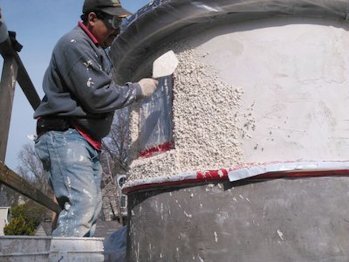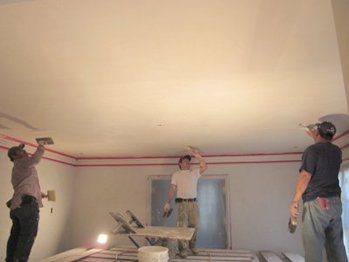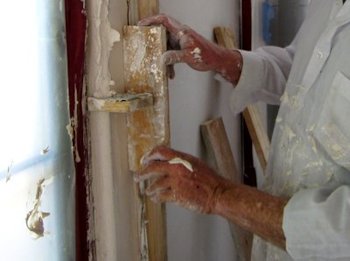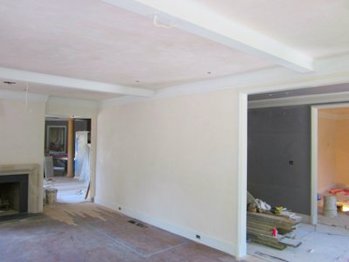>
Jobs in progress #129 - updated May 28, 2013
Capitol Hill Seventh Day Adventist Church. Washington, DC
The competition's work is torn off and replaced in Arlington, Virginia.
The side wall is torn off and redone. This 4 year old house done by the competition needed a complete replacement. We did the two worst sides for now, and plan to do the rest when we have a chance.
More info....
The color on the front matched the side exactly, which is really lucky. The front now has a REAL cement and sand color finish, and should last for decades, or even centuries.
See how we did it..
Underneath these windows had severe rot. The framing and sheathing were wet and rotten and could be pulled out like handfuls of wet oatmeal.
more:
The standard thickness for cement stucco is 3/4". This house had about 3/8" and a toxic synthetic finish. In other words. the competition did less than half the work as we do.
more:
Color veneer plaster in Washington, DC

I forgot to add from the last update the color pebble dash stucco on the top off the stair tower.
Click for more:

The ceiling in the dining room is white coated and troweled smooth. The rest of the plaster has a decorative color finish.
Click for more:

A running mold is used to make the round corners, or arrises..
more:
